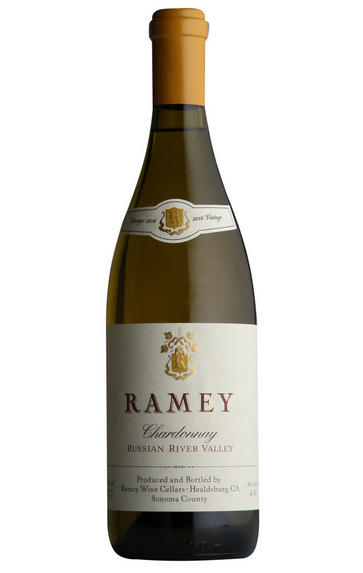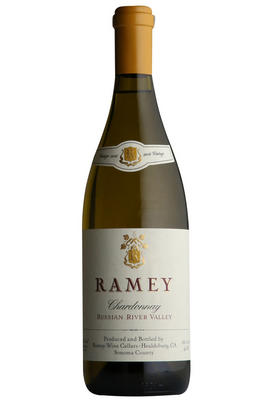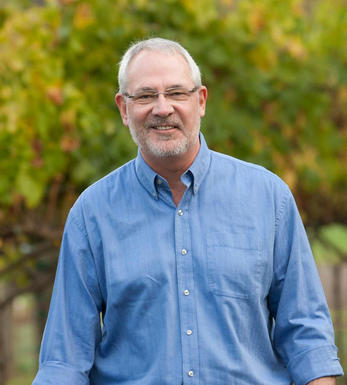
2017 Ramey, Ritchie Chardonnay, Russian River Valley, California, USA

Critics reviews
The 2017 Chardonnay Ritchie Vineyard needs a bit of time in bottle to be at its most expressive. It shows fine depth, creaminess and energy, but the elements are not all put together just yet. Light apricot, butter and floral notes hint at what is to come.
Antonio Galloni, vinous.com (Jan 2020)
The 2017 Chardonnay Ritchie Vineyard is perfumed with soft white blossoms, quince, beeswax and a nutty undercurrent. Medium-bodied and super silky, it expands to perfumed peachy fruit in the mouth, segueing to bright acidity and nutty nuances on the very long, energetic finish. 683 cases produced. Drink 2020-2027.
Erin Brookes, Wine Advocate (Jul 2020)
Seeing the standard 20 months in 20% new French oak, the 2017 Chardonnay Ritchie Vineyard comes from one of the Grand Cru sites in the Russian River Valley. It has remarkable purity and elegance to go with ample richness (which is the hallmark of this site) as well as notes of ripe lemon and citrus fruits, lots of spice and crushed rock-like minerality, medium to full-bodied richness, and a great finish. It's up with the top Chardonnay in the vintage but needs 2-3 years of bottle age. It's going to be drinking brilliantly at age 15.
Jeb Dunnuck, jebdunnuck.com (May 2020)
About this WINE

Ramey Wine Cellars
David Ramey built his reputation at such luminary wineries as Matanzas Creek and Dominus before he and his wife Carla established Ramey Wine Cellars in 1996.
From his earliest experiences in wine, David has been inspired by European styles. Having worked in France at Château Pétrus, he dedicated himself to applying the old-world techniques he absorbed to the perfectly ripe fruit of Napa and Sonoma. At a time when technical winemaking, straight out of the textbook, was the norm in California this made David something of a pioneer on the west coast. He remains one of the most influential winemakers in North America.
David and his wife Carla started small, their first two wines were Chardonnays from the Hyde and Hudson vineyards. To tell the story of their terroir David vinified each in the same fashion, leaving only the quality of the fruit to express the personality of the vineyards. This is a practice continued today across the range of Chardonnays.
In common with most Californian wineries, the majority of grapes are bought in rather than from estate-owned vines. David’s deep understanding of the region and its vineyards have ensured that he only works with great vineyards farmed by great people. His long-standing relationships allowing for a collaborative approach to get the best quality from each site and exemplify their character.
Chardonnay and Cabernet Sauvignon play the leading roles at Ramey, with most of the Chardonnay coming from the cool Sonoma where proximity to the coast gives more exposure to the morning fogs. The Cabernet is all classic Napa. A Sonoma Syrah was added in 2004 and they have subsequently diversified the range with parcels of Merlot, Cabernet Franc and Pinot Noir which David could not resist trying his hand at.
David believes that better farming is the key to California’s continued and growing success. They manage vineyards they lease themselves using organic methods and work hand in hand with their growers to promote sustainable and low intervention methods.
In the winery David’s approach is recognisably Burgundian. Grapes are pressed without crushing to avoid skin contact. Alcoholic fermentation takes place in barrel followed by aging on fine lees and battonage. Malolactic fermentation is allowed to happen. David’s view is that the answer to flabby over-oaked Chardonnay’s once popular with the critics is not to go 180° but to take a balanced approach. This is precisely what he has always done – making wines for critics has never been part of the mantra.

Chardonnay
Chardonnay is often seen as the king of white wine grapes and one of the most widely planted in the world It is suited to a wide variety of soils, though it excels in soils with a high limestone content as found in Champagne, Chablis, and the Côte D`Or.
Burgundy is Chardonnay's spiritual home and the best White Burgundies are dry, rich, honeyed wines with marvellous poise, elegance and balance. They are unquestionably the finest dry white wines in the world. Chardonnay plays a crucial role in the Champagne blend, providing structure and finesse, and is the sole grape in Blanc de Blancs.
It is quantitatively important in California and Australia, is widely planted in Chile and South Africa, and is the second most widely planted grape in New Zealand. In warm climates Chardonnay has a tendency to develop very high sugar levels during the final stages of ripening and this can occur at the expense of acidity. Late picking is a common problem and can result in blowsy and flabby wines that lack structure and definition.
Recently in the New World, we have seen a move towards more elegant, better- balanced and less oak-driven Chardonnays, and this is to be welcomed.


Buying options
Add to wishlist
Description
Slight reduction on the nose gives a gunflinty quality which is very attractive. White flowers, a touch of lime and some oatmeal. In short a very complex but inviting nose. Lots of citrus on the palate with a touch of hazelnut taking me to Meursault. The oak is barely noticeable and adds a very fine sweet spice element. I’ve been a fan of Ramey’s Chardonnays since I first tasted them 10 years ago and this latest edition from the famed Ritchie vineyard certainly doesn’t disappoint! Drink 2022-2030.
Fergus Stewart, Private Account Manager, Berry Bros. & Rudd (Sep 2020)
wine at a glance
Delivery and quality guarantee